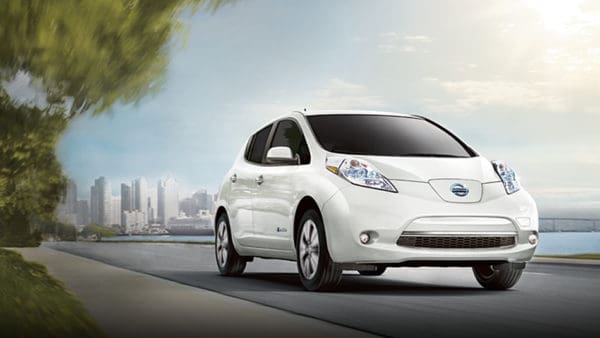
Slowly but surely, consumers are getting used to the idea of the electric vehicle, with 2016 EV sales in Canada up 56 per cent on the previous year, bested in the United States by 70 per cent jump on 2015 numbers.
And with the the new Chevy Bolt racking up plaudits as North American Car of the Year, an award based on reviews by a 60-member jury of professional automotive journalists, as well as Motor Trend 2017 Car of the Year, the expectation was that sales for Chevrolet’s all-electric car with the consumer-friendly price tag would outpace the competition.
Yet, despite being far from a newcomer on the scene, the plucky Nissan Leaf, that other moderately affordable EV, has surged to the lead in 2017. US sales for the Leaf hit 1,500 in March whereas the Chevy Bolt peaked at just 978 units.
The Leaf and Bolt have similar price ranges (under $40,000, before government incentive rebates), both are all-electric, both have similar charging times, yet the Leaf has a 172 km range whereas the Bolt can go up to 383 kms between charges.
So, what gives? Dealership discounts on the Leaf may be part of the explanation, but so is brand familiarity, with customers more likely to go with the known entity in the still-unfamiliar realm of EVs.
“When the Nissan LEAF debuted in 2011, it brought electric vehicles to the masses,” says the Kelly Blue Book. “Easy to drive, whisper-quiet, respectable cargo capacity thanks to its hatchback design and refuelling that’s as easy as plugging in a power cord, the LEAF has moved nearly a quarter-million units worldwide, making it the best-selling EV yet.”
Still only a small fraction of the car market (just 0.5 per cent of sales in Canada in 2016), the introduction of more and more new EV models is making the field much more alluring to consumers. Nine new EV models came on the market in 2016, from the likes of BMW, Audi, Volvo, Hyundai, Mercedes and Tesla.
Last year, the Bolt’s plug-in hybrid cousin, the Chevy Volt made up almost a third of EV sales in Canada, 3,508 units of 11,060 in total EV sales. Nissan sold 1,572 Leafs in 2016 and Tesla’s Model S recorded 1,466 in sales.
With almost half of all EVs currently on Canadian roads, Quebec leads the way in a province-by-province comparison, with 2016 sales up 55 per cent over the previous year. Much of the trend stems from Quebec’s targets for electric and low-emissions vehicles, which include rebates of up to $8,000 for drivers buying EVs and further compensation for owners wishing to install charging stations in their homes.
Last October, in a move called “very aggressive” by the Global Automakers of Canada, the province passed legislation requiring that a minimum of 3.5 per cent of vehicles sold by automakers in Quebec be EVs. In 2025, that fraction will increase to 15.5 per cent.
Leave a Reply
You must be logged in to post a comment.




 Share
Share Tweet
Tweet Share
Share




Comment